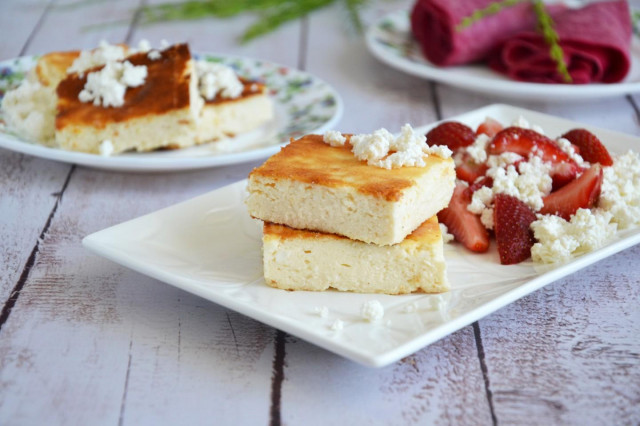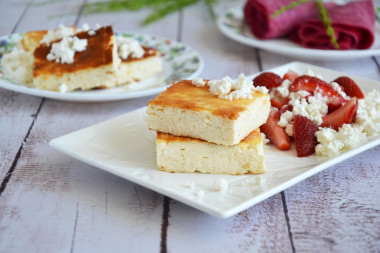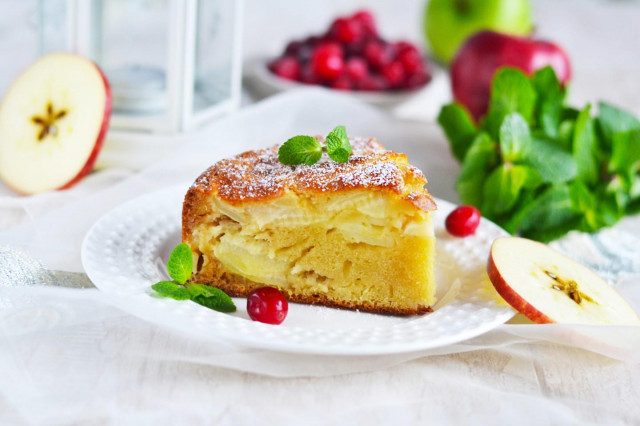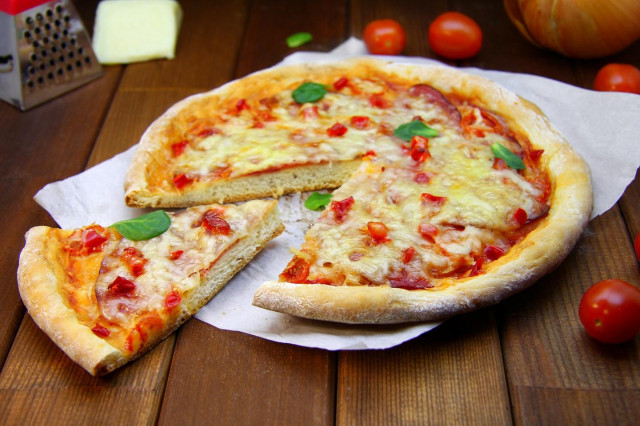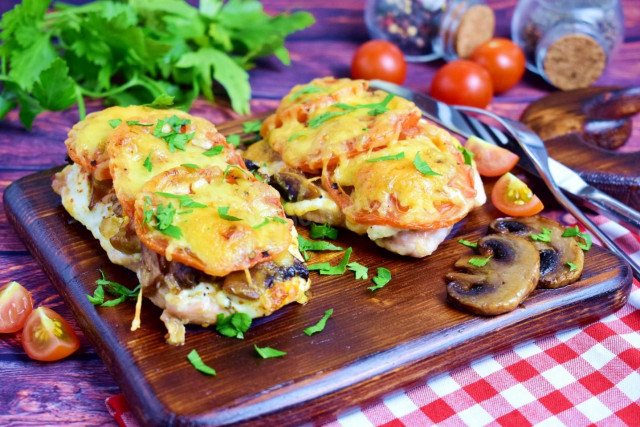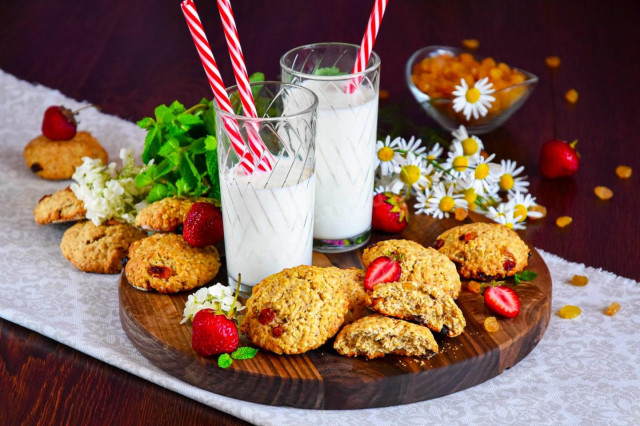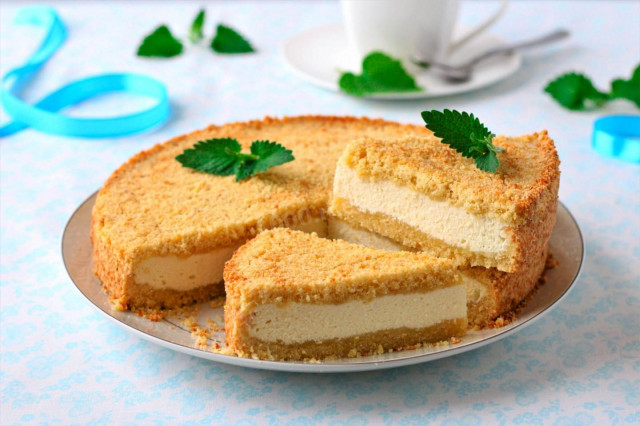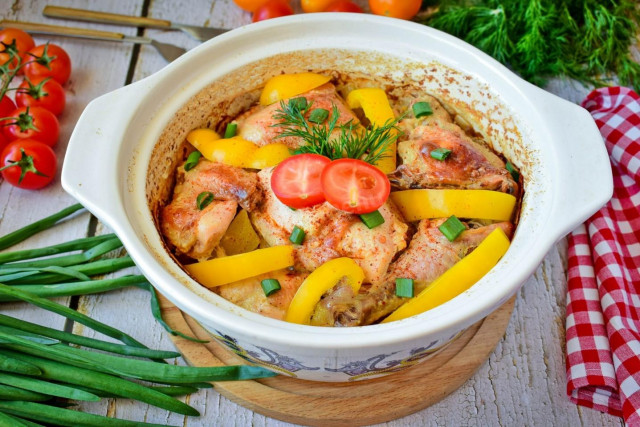Composition / ingredients
Step-by-step cooking
Step 1:
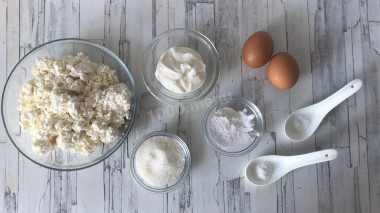
How to make a simple cottage cheese casserole? Measure out the necessary ingredients. Cottage cheese can take any fat content, to your taste. Sour cream too. Wash the eggs well with water and wipe dry. Starch is better to take corn, not potato.
Step 2:
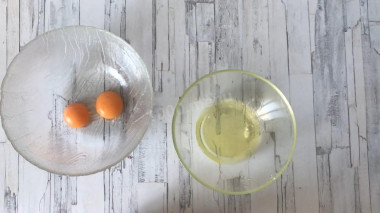
Separate the egg whites from the yolks. You can put the bowl with proteins in the refrigerator for now.
Step 3:
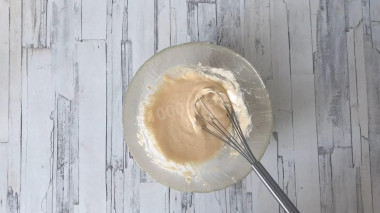
Rub the yolks with sugar. Instead of sugar, you can use sweetener, honey, molasses.
Step 4:
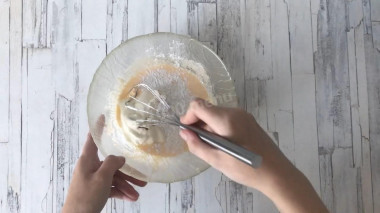
Add sour cream, starch and vanilla sugar to the crushed yolks. Mix everything well until smooth.
Step 5:
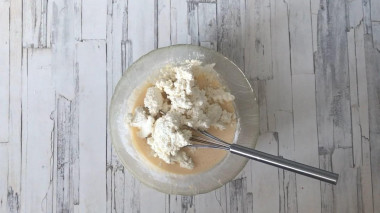
Add cottage cheese to the resulting mass and rub it so that there are no lumps. To make the casserole more tender, you can pre-rub the cottage cheese through a sieve.
Step 6:
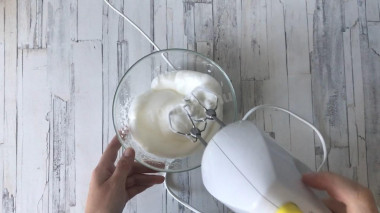
With a mixer, whisk the egg whites with salt into a fluffy, stable foam. In order for the proteins to beat better, we needed to cool them in the refrigerator before that.
Step 7:
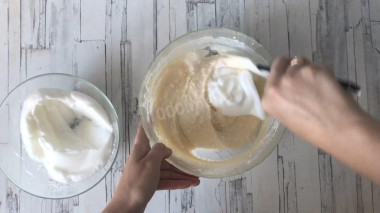
Gently mix the whipped whites into the curd mass. Mix everything in one direction, from bottom to top, in smooth movements. This is necessary so as not to disrupt the airiness of proteins.
Step 8:
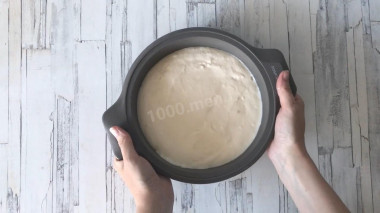
Put the resulting mass into a greased baking dish and smooth it out. Bake the casserole for about 40 minutes at 180 ° C. Determine the time and temperature by your oven. Cool the finished curd casserole slightly and serve. With sour cream, jam, jam, any sweet sauce, it's a miracle how good it is! Bon appetit!
Here is another recipe for an interesting casserole, which turns out to be very porous and tender in structure. This casserole is very good for dinner, as well as as an intermediate snack.
Keep in mind that everyone's ovens are different. The temperature and cooking time may differ from those specified in the recipe. To make any baked dish successful, use useful information about the features of ovens !
Important! In order for the curd dough or filling to be successful, it is important to carefully consider the choice of cottage cheese. A low-quality product can spoil baking, as it directly affects the consistency, taste and final result. How to choose the right cottage cheese for dough or filling read in this article .
How to bake a lush and tender casserole? Do not expect the same increase in volume from the curd mass, as, for example, in a yeast cake or sponge cake. The splendor of the curd casserole directly depends on the size of the chosen shape: the smaller the shape and the higher the sides, the higher the layer of curd mass for baking will turn out, which means the finished casserole will be higher.
Caloric content of the products possible in the composition of the dish
- Sour cream with 30 % fat content - 340 kcal/100g
- Sour cream with 25% fat content - 284 kcal/100g
- Sour cream with 20% fat content - 210 kcal/100g
- Sour cream of 10% fat content - 115 kcal/100g
- Sour cream - 210 kcal/100g
- Chicken egg - 157 kcal/100g
- Egg white - 45 kcal/100g
- Egg powder - 542 kcal/100g
- Egg yolk - 352 kcal/100g
- Ostrich egg - 118 kcal/100g
- Cottage cheese of 40% fat content - 466 kcal/100g
- Cottage cheese of 20% fat content - 233 kcal/100g
- Cottage cheese of 18% fat content - 226 kcal/100g
- Cottage cheese of 10% fat content - 156 kcal/100g
- Low-fat cottage cheese - 75 kcal/100g
- Cottage cheese with sour cream - 260 kcal/100g
- Fruit cottage cheese - 147 kcal/100g
- Soft dietary cottage cheese - 170 kcal/100g
- Cottage cheese "vitalinia" - 64 kcal/100g
- Cottage cheese "morning" ( "danone") without sugar - 91 kcal/100g
- Cottage cheese - 156 kcal/100g
- Granulated sugar - 398 kcal/100g
- Sugar - 398 kcal/100g
- Starch - 320 kcal/100g
- Salt - 0 kcal/100g
- Vanilla sugar - 379 kcal/100g

